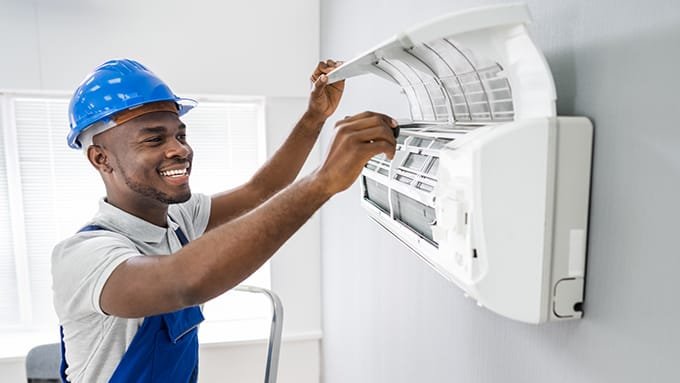ABS Edge Banding: Enhancing Durability and Aesthetics in Modern Furniture

In the world of furniture manufacturing, edge banding plays a crucial role in enhancing the durability and aesthetics of products. One of the most popular materials for edge banding is Acrylonitrile Butadiene Styrene, commonly known as ABS. ABS edge banding offers a combination of durability, flexibility, and environmental friendliness, making it a preferred choice for manufacturers and consumers alike.
In this article, we’ll explore what ABS edge banding is, its benefits, and how it compares to other materials. We’ll also look at how it can be applied to various types of furniture to improve both its appearance and longevity.
What is ABS Edge Banding?
ABS is a thermoplastic polymer known for its toughness and impact resistance. It is widely used in a variety of applications, from automotive components to electronic housings. In the context of furniture manufacturing, ABS is molded into thin strips that are applied to the edges of wooden boards, particularly those made from materials like MDF, plywood, or particleboard.
These edge banding strips provide a smooth, finished look, covering rough or unfinished edges that can be unattractive and prone to damage. ABS edge banding is available in various colors, textures, and finishes, allowing manufacturers to match or complement the design of the furniture.
Key Benefits of ABS Edge Banding
1. Durability and Impact Resistance
One of the standout benefits of ABS edge banding is its durability. ABS is known for its resistance to impact, meaning it can withstand knocks and bumps that furniture often endures in everyday use. Whether it’s a table, kitchen cabinet, or office desk, ABS edge banding ensures that the edges are protected from chipping, cracking, or other forms of damage.
2. Environmental Friendliness
As concerns about sustainability and environmental impact grow, many manufacturers are shifting to more eco-friendly materials. ABS is free from harmful substances such as chlorine, making it a safer and more environmentally friendly choice compared to PVC edge banding. ABS is also recyclable, meaning that once the furniture reaches the end of its life, the edge banding material can be reused rather than ending up in landfills.
3. Heat and Chemical Resistance
ABS edge banding is known for its resistance to heat and chemicals. This makes it ideal for use in kitchens, bathrooms, and other environments where surfaces are exposed to varying temperatures and cleaning agents. It ensures that the edge banding will not warp, peel, or degrade when exposed to these elements over time.
4. Aesthetic Versatility
Available in a wide range of colors and finishes, ABS edge banding allows manufacturers to achieve the perfect look for their furniture. Whether aiming for a modern, minimalist design with a matte finish or a more traditional woodgrain texture, ABS can be customized to meet aesthetic requirements. This versatility ensures that edge banding enhances, rather than detracts from, the overall appearance of the furniture.
5. Ease of Application
ABS edge banding is lightweight and easy to apply using standard edge banding machines. It can be applied using either hot-melt adhesives or pre-glued strips, making it a convenient option for manufacturers. Its flexibility also means that it can be applied to curved surfaces, providing a seamless finish even on non-linear designs.
ABS Edge Banding vs. PVC and Other Materials
While ABS is a popular choice for edge banding, it’s essential to understand how it compares to other materials like PVC (Polyvinyl Chloride) and melamine. Here’s a quick comparison:
- ABS vs. PVC: Both ABS and PVC are durable thermoplastics, but ABS has the upper hand when it comes to environmental friendliness. PVC contains chlorine, which can release harmful dioxins if the material is burned. ABS, on the other hand, is chlorine-free and recyclable. In terms of performance, both materials offer similar levels of impact resistance and durability.
- ABS vs. Melamine: Melamine edge banding is a more cost-effective option but is less durable than ABS. It is prone to chipping and cracking over time, particularly in high-traffic or heavily used furniture. ABS provides a more resilient alternative, making it the better choice for long-term use.
Common Applications of ABS Edge Banding
ABS edge banding is used in a wide variety of furniture types, including:
- Kitchen Cabinets: The heat resistance of ABS makes it an excellent choice for kitchen cabinets, where edges are often exposed to heat and moisture from cooking and cleaning.
- Office Furniture: For office desks, tables, and shelving, ABS provides a professional finish that can withstand the daily wear and tear of a busy work environment.
- Retail Fixtures: In retail environments, where fixtures are constantly exposed to foot traffic and potential impacts, ABS edge banding helps maintain a clean, polished appearance.
ABS edge banding is a versatile and durable solution for enhancing the edges of modern furniture. Its combination of impact resistance, environmental friendliness, and aesthetic versatility makes it a top choice for manufacturers and designers. Whether you’re looking to protect the edges of kitchen cabinets, office desks, or retail fixtures, ABS edge banding offers a high-performance, sustainable solution that meets the demands of modern furniture design.
For more information on ABS edge banding and other furniture finishing solutions, visit Easy Spray. They offer a range of edge banding products designed to enhance the durability and appearance of your furniture.












